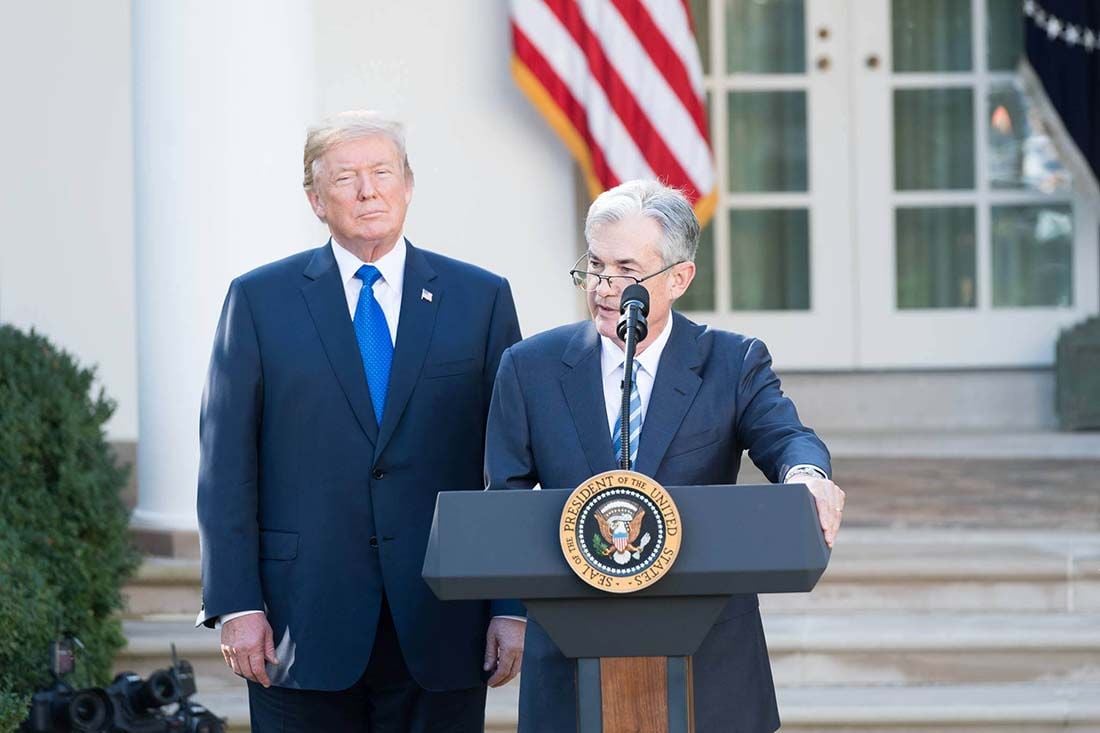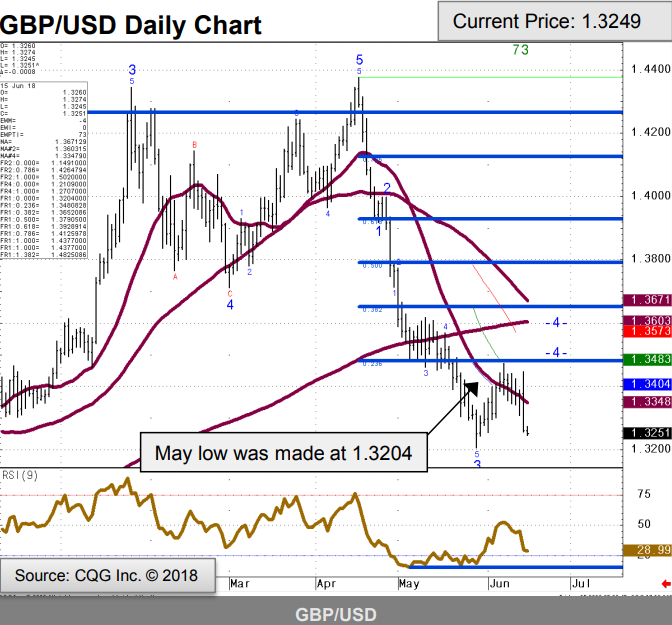Pound-to-Dollar Rate Week Ahead Forecast: Dollar in Control, Carney and Powell in Focus
- Written by: James Skinner
- Elliot wave count hints at potential rebound
- Keep an eye on Bank of England this week
- Watch Fed's Powell in Sintra, Portugal

Above: The Federal Reserve's Powell will be in Portugal this week and what he says could influence the Dollar.
Pound Sterling slumped back towards May lows last week after the U.S. Dollar renewed its assault against international rivals and as Sterling was dragged lower by its close correlation with the Euro-to-Dollar rate, although one strategist says there is scope for it to recover some lost ground during the week ahead.
Things were looking up for Pound Sterling until late on Thursday, after Office for National Statistics data showed retail sales rising much faster than was expected in May. UK high street spending rose 1.3% in May, much faster than the 0.5% consensus forecast, setting the Pound-to-Dollar rate on course for a weekly profit.
However, Thursday's European Central Bank meeting sent the Euro-to-Dollar rate down by more than 300 points, a severe move that favoured the broader Dollar and ultimately dragged the Pound-to-Dollar exchange rate with it.
The ECB said Eurozone interest rates will remain at their current record low levels until "at least through the summer of 2019, when markets had previously come to believe the central bank would not only end its QE programme over coming months, but that it would also look to raise rates around June 2019.
This sent the Euro-to-Dollar rate down by more than 300 points to 1.1550 Friday, which dragged the Pound-to-Dollar rate back below the 1.33 threshold.
Downward pressure on both exchange rates was compounded by US economic data showing retail sales rising at close to double the pace that economists had forecast for the month of May. This reignited the "divergence" narrative that had seen markets bid the Dollar higher at the expense of other currencies due to faster growth and a brighter economic outlook over across the pond.
Economists are now increasingly of the view that the US economy will expand by as much as 4% during 2018, while the European Central Bank says it expects Eurozone growth of little more than 2%. The Bank of England says the UK economy will grow by an even more meagre 1.5% in 2018.
"GBP/USD has been rejected from just below the 23.6% Fibonacci retracement at 1.3481. It is increasingly looking to be on the defensive and attention has reverted to the recent low at 1.3204," says Karen Jones, head of technical analysis at Commerzbank.
A negative bias will remain entrenched while capped by the 1.3712 March low," adds Jones.
However, there are some suggestions written in the charts that suggest it won't necessarily be one-way traffic for GBP/USD.
"The Elliott wave count is still pointing to a corrective rebound into the 1.3500 and then 1.3600 area which would not even represent a 38.2% retracement, which lies at 1.3652," says Jones.
Advertisement
Get up to 5% more foreign exchange by using a specialist provider to get closer to the real market rate and avoid the gaping spreads charged by your bank when providing currency. Learn more here.
Data and Events to Watch for the Pound this Week
The week ahead in the UK sees the economic data calendar fall quiet after an action-packed five day period that saw industrial production figures for April underwhelm the market, while unemployment data showed the labour market remaining in rude health in May and retail sales figures showed consumer spending coming back with a bang during the recent month.
The Bank of England interest rate decision for June is the sole event of importance in the calendar for Sterling, due at 12:00 pm Thursday, and markets are looking for the central bank to hold rates steady at their current 0.50% level. It isn't expected to make changes to any other aspects of its monetary policy either, although markets will scrutinise the contents of the statement closely for clues as to how the Bank's views on the economy may have changed since its May meeting.
Economists and markets are currently looking to the August 02 monetary policy announcement for the next possible BoE rate hike. Pricing in interest rate derivatives markets implied an August 02 Bank Rate of 0.56% on Friday. If markets were really that confident about the BoE raising rates anytime soon then that implied rate would be somewhere closer to 0.75%.
Markets will also keep a close watch on the White House, China and European Union for signs of an escalation in the so called "trade war" after the US administration listed a large number of Chinese export goods that will be targeted by US tariffs over the coming days.
The move advances an earlier plan to pressure China into changing some of its trade practices and to voluntarily reduce its bilateral trade deficit with the US, but it also risks riling global financial markets if it looks at any point as if the two countries could be about to renew an earlier tit-for-tat tariff fight.
Tensions between the US and EU are also running high after President Trump slapped tariffs onto their steel and aluminium exports to the US.
Data and Events to Watch for the Dollar this Week
The week ahead in the US also sees the economic data calendar fall quiet after its own action-packed five day period that saw figures show inflation and retail sales rising faster than was expected in May, as well as the Federal Reserve announcing a second interest rate rise for 2018.
Federal Reserve rate setters also added another dot to the so called "dot-plot", which details policymaker expectations for interest rates over coming years, suggesting most voting members on the Federal Open Market Committee see themselves backing a faster pace of rate rises at some time during the months ahead.
Federal Reserve chairman Jerome Powell will take part in a panel discussion, due at 14:30 London time on Wednesday and to take place at the central banking conference in Portugal, marking the sole event of importance in the calendar for the US Dollar next week.
Advertisement
Get up to 5% more foreign exchange by using a specialist provider to get closer to the real market rate and avoid the gaping spreads charged by your bank when providing currency. Learn more here.





